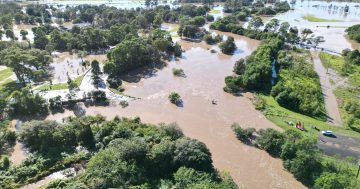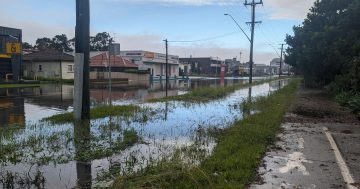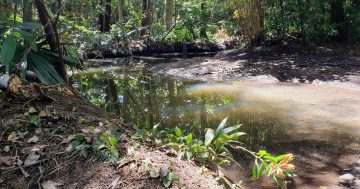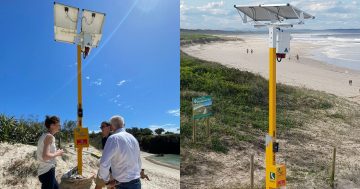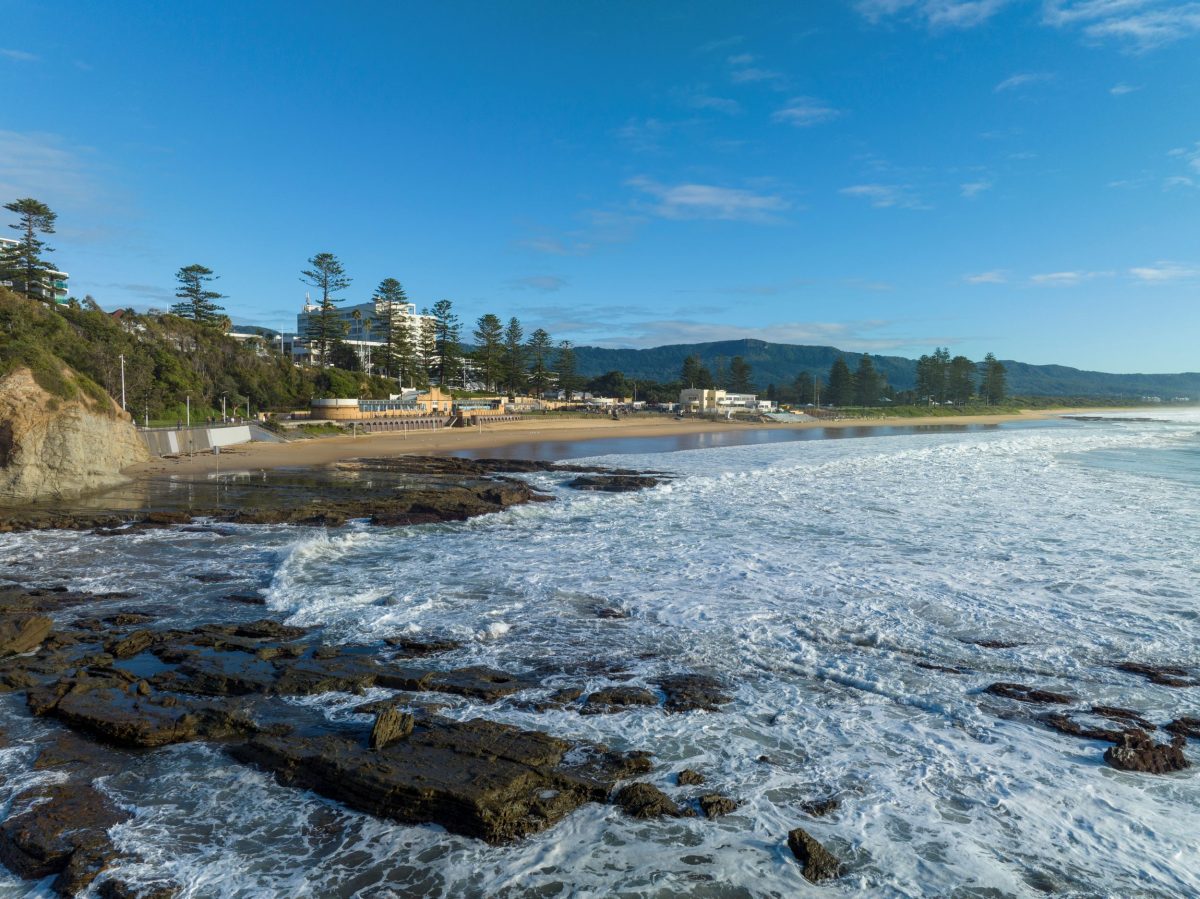
North Wollongong Beach retained its good rating in the NSW State of the Beaches report. Photo: Beachwatch/DPE.
The Illawarra’s beaches have been given a healthy tick of approval, with only one of 21 swimming spots receiving a poor rating.
The NSW State of the beaches 2022-2023 report shows 95 per cent of swimming sites in the Illawarra region were graded as good or very good.
Coledale Beach was upgraded from good to very good, while Coniston and Werri Beaches dropped back to a good rating. The only poor rating was given to the Lake Illawarra entrance Lagoon Beach which was downgraded from good in the previous year.
The Beach Suitability Grades for 2022–2023 are based on water quality data collected over the past two to four years.
The report said that generally, lake/lagoon swimming sites did not perform as well as ocean beaches due to lower levels of flushing, which increased the time needed to disperse and dilute pollution inputs, taking longer to recover from stormwater events.
“Water quality at this site was mostly suitable for swimming during dry weather conditions, with 78 per cent of dry weather samples within the safe swimming limit when there had been no rain in the previous 24 hours,” the report said.
“Enterococci levels increased with increasing rainfall and were often recorded after light rain.
“The swimming site is located within the entrance of Lake Illawarra and has lower levels of flushing. Due to this, the site can retain pollution inputs and take longer to recover from the impacts of stormwater.
“Water quality at this site may be impacted by contaminants discharged from Lake Illawarra, and stormwater during and following rainfall. Swimming should be avoided during and for up to three days following rainfall, or if there are signs of pollution such as discoloured water, flowing drains or floating debris.”
The NSW Government’s Beachwatch program monitors the water quality of beaches and other swimming locations to provide the community with accurate information on the cleanliness of the water and to help people make informed decisions about where and when to swim.
Routine assessment also measures the impact of pollution sources, enables the effectiveness of stormwater and wastewater management practices to be assessed and highlights areas where further work is needed.
The report said Illawarra’s beaches were suitable for swimming for most or almost all of the time. The overall performance of the region’s beaches slightly declined on previous years, reflecting a very wet winter and spring, and some significant rainfall events associated with storms during summer.
The best beaches – those which had excellent water quality and were suitable for swimming almost all of the time – were Stanwell Park Beach, Coledale Beach, Austinmer Beach, Woonona Beach, Wollongong City Beach and Fishermans Beach.
“Rainfall is the major driver of pollution to recreational waters, generating stormwater runoff and triggering untreated discharges from the wastewater treatment and transport systems,” it said.
“Changes in rainfall patterns are reflected in beach water quality over time due to variation in the frequency and extent of stormwater and wastewater inputs.”
NSW Environment Minister Penny Sharpe said the Beachwatch website had real-time information for swimmers who wanted to check conditions.
“As we head into swim season it is great news that 96 per cent of our monitored beaches have excellent water quality,” she said.
“Rainfall is the main reason water quality changes, and we had a lot of it in 2022. As a result, many inland and freshwater swimming sites did not perform as well as our ocean beaches.”
The NSW State of the beaches 2022-2023 report can be viewed here.











